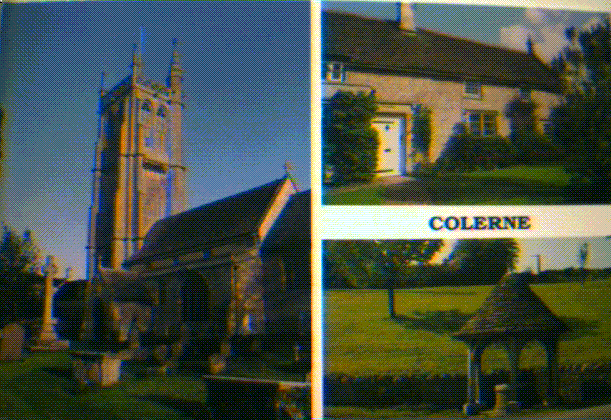
_______________________________________________________________________________________________________________________
The present spelling of the of the village, Colerne, is the same as that used in Domesday Book (1086), but it appears only a little later as Culerna or Culerne in the Malmesbury Register of 1156, and there seems to have been persistent alteration between the two spellings (sometimes as Collerne or Cullerne right up to the last century. The local pronunciation of the name clearly relates to the cul form.
Other writers have suggested different meanings. John C Langstaff (1911) says the first syllable from Welsh or Cornish col, a peak. Hence the 'dwelling on the peak'. It may however be 'the cold dwelling' from Anglo-Saxon cald, cold. He also suggested it was a derivation from the surname of a Wiltshire land owner 'Cole'. More recently in "Wiltshire Place Names", Richard Tomkins (1983) seems to have been influenced by the cul spelling in suggesting "the household of Cula", but he, too, recognises that "as Colerne stands on the hillside above the steep coombe formed by the By Brook, the first element is likely to be from the Welsh word col descriptive peak or summit

Colerne Church: Saint John the Baptist
East end built between 1190 & 1195
North aisle & clerestory 1280
Tower 1450
Well: Eaststrip
Stone Age Colerne (c6000-2500BC)
The earliest evidence for settlement in Colerne is marked by the three Shire Stones, on the western boundary of the parish. The present stones are not original, but were erected in the Victorian era, superseding three smaller stones which were allowed to remain undisturbed beneath the central stone.